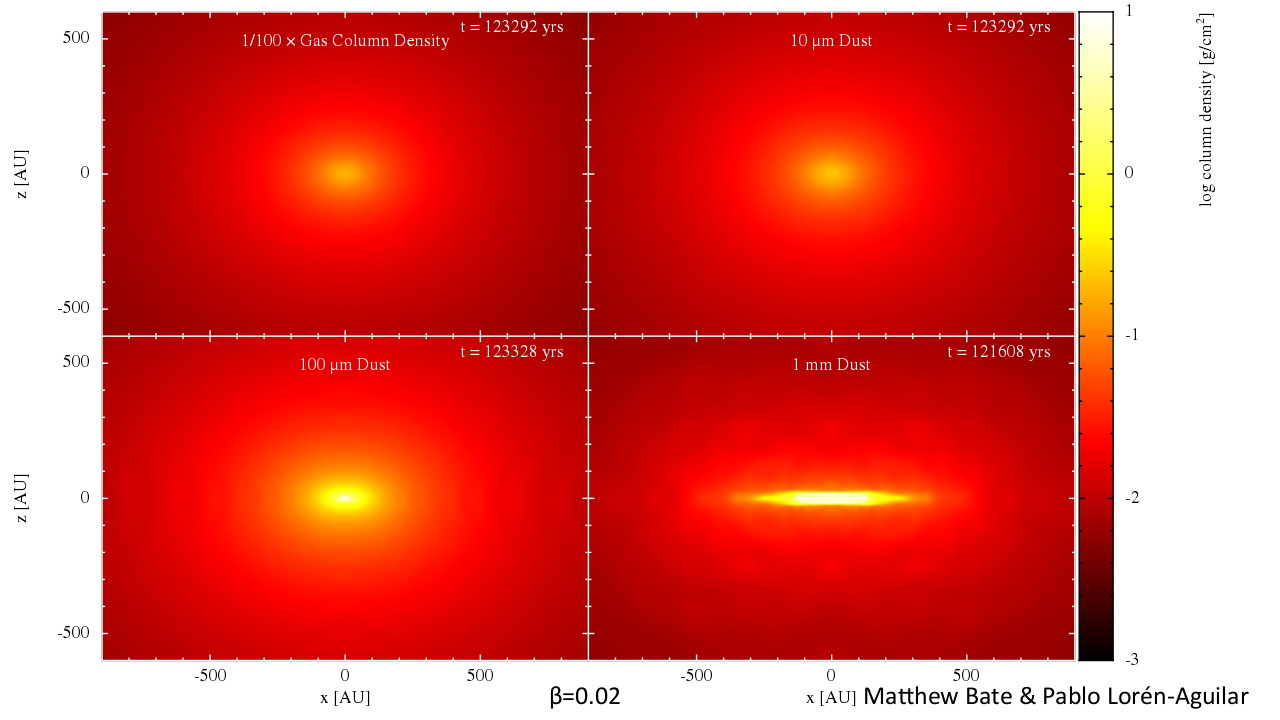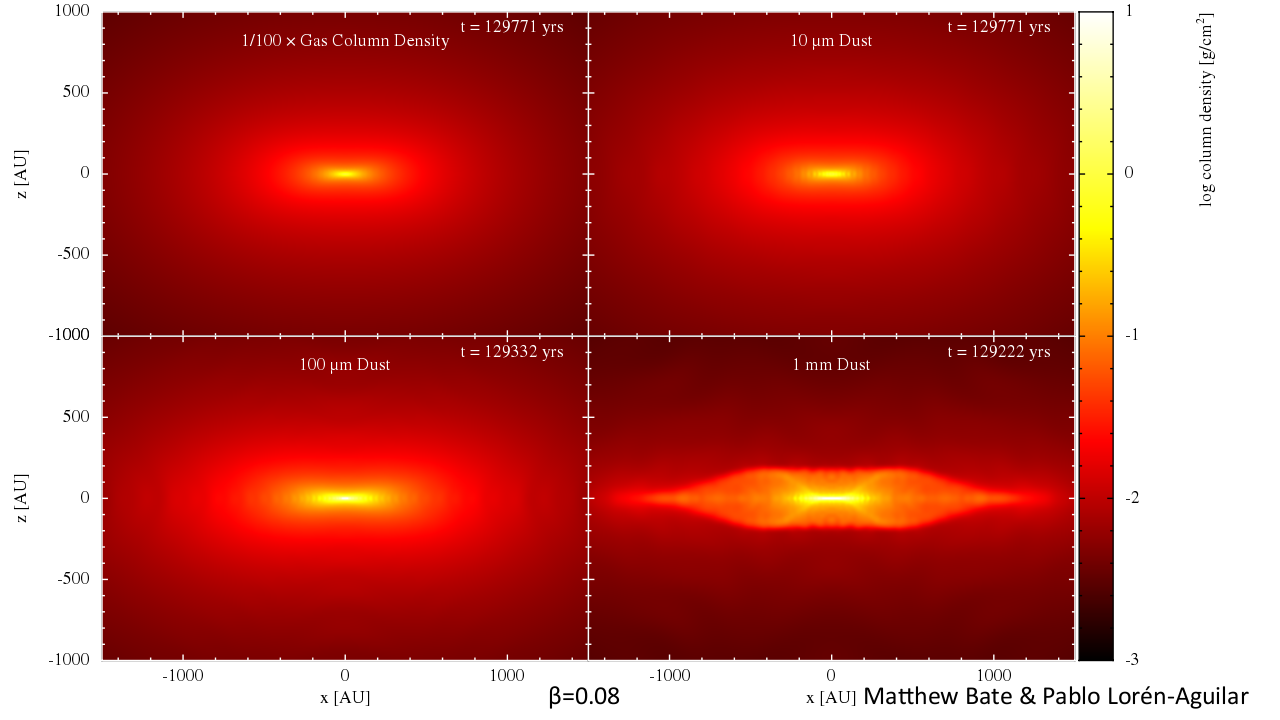On the dynamics of dust during protostellar collapseMatthew R. Bate & Pablo Loren-Aguilar The dynamics of dust and gas can be quite different from each other when the dust is poorly coupled to the gas. In protoplanetary discs, it is well known that this decoupling of the dust and gas can lead to diverse spatial structures and dust-to-gas ratios. In this paper, we study the dynamics of dust and gas during the earlier phase of protostellar collapse, before a protoplanetary disc is formed. We find that for dust grains with sizes < 10 micron, the dust is well coupled during the collapse of a rotating, pre-stellar core and there is little variation of the dust-to-gas ratio during the collapse. However, if larger grains are present, they may have trajectories that are very different from the gas during the collapse, leading to mid-plane settling and/or oscillations of the dust grains through the mid-plane. This may produce variations in the dust-to-gas ratio and very different distributions of large and small dust grains at the very earliest stages of star formation, if large grains are present in pre-stellar cores. The animations below show the evolution of the gas and dust during the collapse of two molecular cloud cores with different initial rotation rates. Refereed Scientific Papers
"On the dynamics of dust during protostellar collapse" AnimationsSimulations & visualisations by Matthew Bate & Pablo Loren-Aguilar, University of Exeter unless stated otherwise. The movies below were produced using the SPLASH software written by Daniel Price to visualise SPH simulations (Price 2007). The animations show gas and dust column densities viewed perpendicular to the rotation axis. The initial dust-to-gas ratio is 1/100, so the gas column density has been scaled by 1/100 for easy comparision with the dust column densities. The other three panels show the dust column density for 10 micron, 100 micron, and 1 mm dust grains, assuming that all of the dust is in grains of these sizes. If the column density in the dust panels exceeds that in the gas panel, this indicates that the dust-to-gas ratio has increased. For the largest grains, the collapse of the dust occurs much faster than that of the gas and the dust passes through and oscillates about the mid-plane before settling. Gas and dust evolution during molecular cloud core collapseCopyright: The material on this page is the property of Matthew Bate. Movies and images are released under a Creative Commons Attribution-Noncommercial-Share Alike 3.0 License.
Notes on formats: Technical DetailsThe calculations model the collapse of a 5 solar mass Bonnor-Ebert sphere with an initial radius of 0.1 pc and an inner-to-outer density constrast of 20. Two different rotation rates were studied, with ratios of rotational to gravitational energies of 0.02 and 0.08. Separate calculations were performed for each dust grain size, covering sizes of 10, 100, and 1000 microns. The initial dust-to-gas ratio for each calculation was 1:100. The dust is taken to be composed of spherical grains with densities of 3 g/cm3. The calculations were performed using a parallel three-dimensional smoothed particle hydrodynamics (SPH) code using 10 million particles for the gas, and 300,000 particles for the dust. The evolution of the dust/gas fluid was modelled using the SPH method of Loren-Aguilar & Bate (2014, 2015). The calculations were performed on STFC's DiRAC Complexity High Performance Computing facility, and the University of Exeter supercomputer. Copyright: Matthew Bate, University of Exeter.
|


